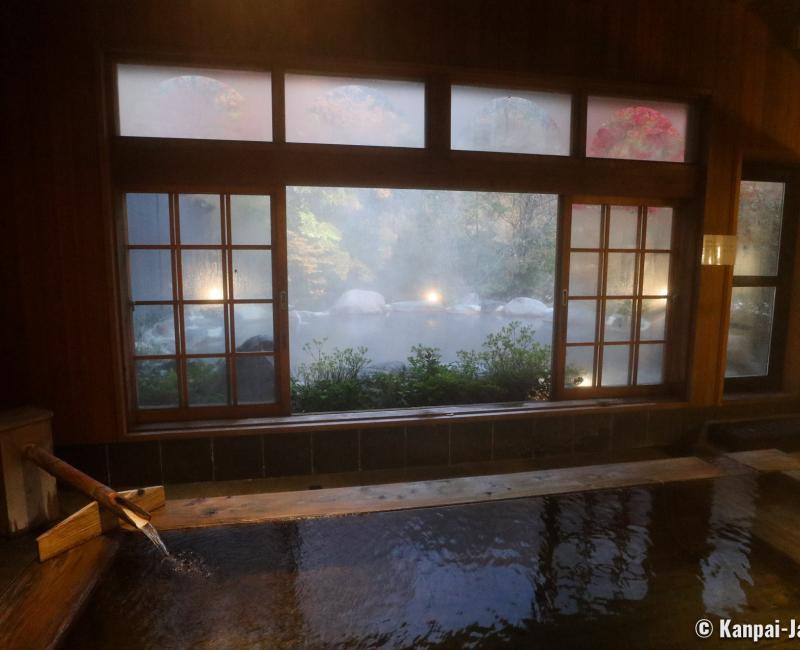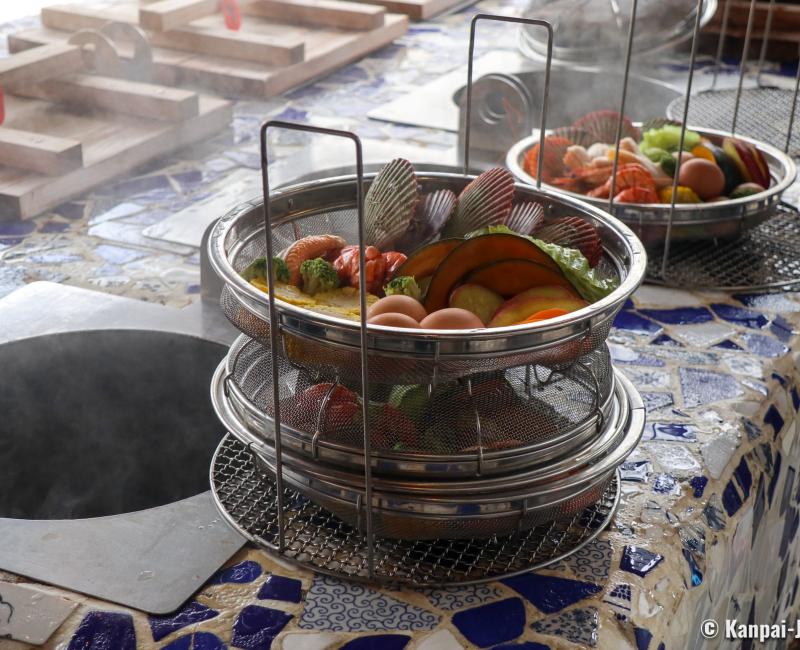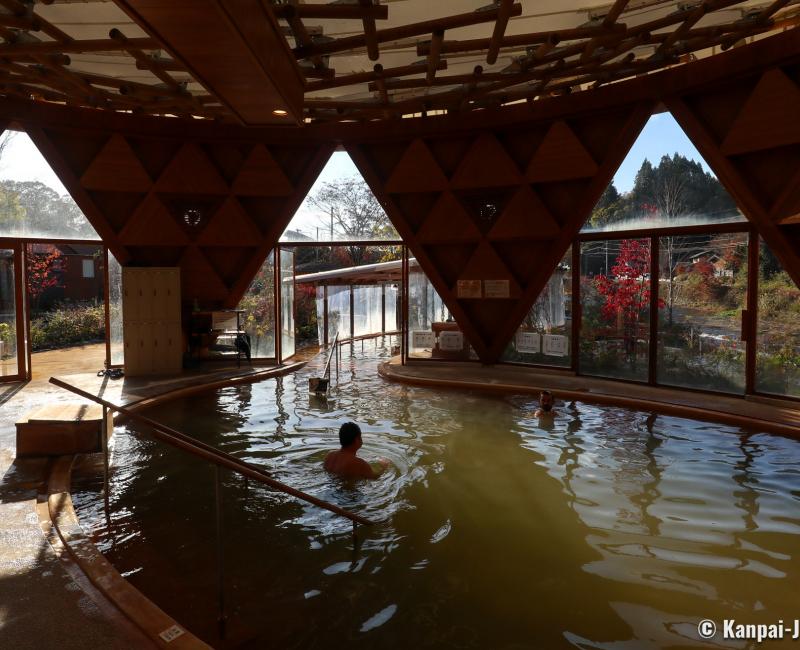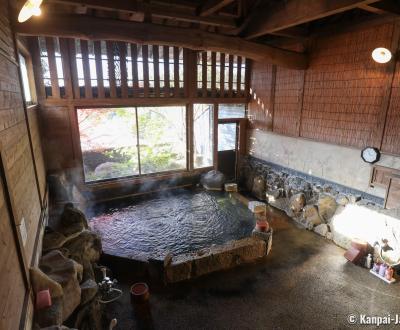Onsen Culture in Japan
Japanese people have a taste for bathing in general, and they show a predilection for onsen ♨️, the natural hot springs that well throughout the archipelago as long as there is a volcanic activity. To earn the status of onsen, the water’s natural temperature must be at least 25°C (most of the time between 35°C and 42°C) and it must contain at least one type of mineral in a suitable amount (carbon dioxide, sulphur, iron, sulfate, acid or alkaline pH, etc.). For thousands of years, Japanese people have enjoyed relaxing in group in steaming hot baths and take care of their health in these waters.
Kyushu, the privileged land of thermal waters in Japan
Kyushu is the southernmost of the four great Japanese islands, and is home to numerous volcanos 🌋, some of which still very active. There are many spa towns, especially in the south in Kagoshima prefecture, and in the center, in Kumamoto and Oita prefectures. Beppu is the capital of the onsen, located on the shore of Seto Inland Sea and boasts more hot springs than any other city in Japan.
The onsen symbol ♨️ in Japan was popularized by Aburaya Kumahachi, an early 20th century businessman who used an already existing pictogram and associated it to the development of hot springs tourism in Beppu, then in Yufuin in the 1930s. Each of the three lines and their lengths represent the number of baths a customer in a ryokan (traditional inn with onsen) should take:
- A first short bath at the end of the afternoon, upon arrival at the inn,
- An longer after-dinner bath, to help prepare for the night,
- Lastly a short bath in the morning just after waking up.
It is generally recommended not to stay longer than 10 minutes for the first bath, to get the body used to the temperature. We gathered a selection of hot springs destinations to discover in Kyushu.

Kurokawa Onsen, the authentic break
To the north of Mount Aso, in Kumamoto area, Kurokawa Onsen is a quiet little town where about thirty hot spring 🌸 establishments spread in the heart of a six kilometers long wooded valley. Visitors enjoy the authentic atmosphere of the place totally dedicated to balneotherapy. The main activity here is inn-to-inn touring to try different baths, especially the really beautiful outdoor baths. This tour is named rotenburo meguri in Japanese, and is translated as "onsen hopping."
In Kurokawa Onsen, purchase a small wooden plate on which are three stickers. The stickers are entrance tickets to three of the establishments indicated on the provided map. The ryokan staff will stamp the plate after each bath, and you can keep it as a nice souvenir of the stay.
Kurokawa’s traditional inns serve the gourmet and typically Japanese Kaiseki cuisine. The meal is composed of a dozen of dishes served successively and elaborated with the season’s harvest. In autumn 🍁, for example, the most common ingredients are ginkgo nut tofu (Ginnan Tofu) and chestnuts. Each dish is refined and tasty, in a perfect harmony with the custom of bathing several times a day.
More than a remote village in the countryside with a luxurious accommodation offer, Kurokawa Onsen provides a change of scenery. Each of its onsen has its own characteristics: small and intimate, or wide with a large view on the valley, women only or mixed baths. Only good surprises await tourists who venture there!

Kannawa Onsen, living to the rhythm of hells
Located in Oita prefecture, Beppu, the onsen capital is divided in no less than eight districts dedicated to hot springs, named Beppu Hatto. Kannawa is the most famous and certainly worth the detour. The underground is literally fuming through the narrow streets, with steam flowing from all air vents and manholes. Walking among Kannawa’s beautiful traditional houses is pleasant, and the reduced number of cars 🚙 is enjoyable. Visitors may even believe they are back in an ancient and feudal period.
Beppu’s onsen are as numerous as varied, with clear or turbid waters of different characteristics. Onsen amateurs generally stay here over a longer period, about one to two weeks. They enjoy bathing of course, but they also benefit from the area’s urban and touristic equipment to practice various activities.
We recommend trying the local cuisine in one of the Jigoku-mushi style restaurants. Mushi means "steamed" and jigoku means "hell". The food is said to be more savory when cooked with the heat of the natural hot springs. The nutrient rich volcanic vapors steam through the ingredients that gain nutritional value good for the health. One of the most iconic dish is onsen tamago, an egg soft-boiled in the onsen steam. The little extra: you can eat at the table while your feet are immersed in hot water underneath.
On a side note: Kannawa is located on the heights of Beppu, and many of its ryokan have outdoor baths with a view on the roofs and the steam plumes of the city. In the same area is Beppu’s main touristic attraction: the "hells tour," an impressive and unique visit in Japan.

Ramune Onsen and Nagayu Onsen for their therapeutic qualities
At the foot of Aso-Kuju Mountain range, Taketa city is home to two types of specific and rather modern hot springs.
Ramune / Lamune Onsen is characterized by a source rich in carbon and naturally sparkling water, with 1,000mg of carbon per liter. The thermal spring was recognized in 2005 for its natural properties beneficial to the body, especially on rheumatism, bowel diseases and external inflammation when immersing in the water (temperature around 32°C) and internal inflammations when drank. This sparkling mineral water is indeed drinkable, which is quite unusual in Japan.
Next to Ramune is Kur Park Nagayu a vast and recent wellness center, opened in April 2019. It is possible to enjoy the facilities of this small village of Nordic appearance on a one-day trip or on a several days stay. For longer stays, cottages with convenient rooms are available.
This place is akin to thalassotherapy centers, with a pool reserved for people in swimsuits to exercise. In addition, there is a more classical onsen for relaxation, with a separated naked bath.
Nagayu Onsen is quite appreciated on a daily basis by locals, and especially the elderly who enjoy the therapeutical qualities of the sources.
An ancestral relaxation practice
Japanese people's appetence for water, the natural element that purifies the body and the spirit, took roots early in the country’s history, and is linked to the Shinto and Buddhist cults. The onsen culture, intended as bathing in group, also emerged from rural society. Peasants celebrated the end of rice harvesting in going to the nearest hot springs from their village. This break could last up to about ten days to take care of the bodies and eat good, typical dishes, while bathing in group. The upper classes of the society also took on this habit of refreshing periodically and started to go to destinations suited to their ranks, such as Arima Onsen in Kobe that was long dedicated to Kyoto’s nobility.
During Edo period (1603 - 1868), thanks to the political stability and the relative prosperity that ensued for the people, the practice of traveling gained momentum as well as stopping by onsen. From the middle of the period, the habit of taking two meals and staying one night in an inn spread. Thus, the therapeutic aspect of a several days stay disappeared and was replaced by a comforting break in a longer travel, such as pilgrimages or traveling along Edo’s roads.
A generous thermal offer suited to everybody’s needs
A new kind of onsen establishments appeared during Meiji era (1868 - 1912): the resort for foreigners. The government had just created a ministry of tourism under the English name of Tourist Bureau, and wanted that "Foreign VIP do not mingle with the masses." That is why some destinations, especially Hakone, Nikko or Miyajima, moved upscale and equipped with luxury hotels 🏨. Until today, they are still renowned for their high-end ryokan and sophisticated Kaiseki cuisine and are as much appreciated by foreign tourists as by Japanese tourists.
The custom of bathing naked with other people seems unique to Japan and is not seen anywhere else in Asia. It is said to be the consequence of an anti-war culture, peculiar to the Japanese people, where aggressiveness towards one own’s kind is less important. It may be due to an early linguistic unification of the archipelago that helped a better understanding between clans and developed a homogenic culture to a certain extent.
Either way, the hot bath practice has always been an integral part of the Japanese daily life. It would be a shame for tourists visiting the archipelago not to discover this original and pleasurable tradition. For a wellness break in a tight visits schedule, it is recommended to give two full days to the joy of onsen, and even to make it the purpose of a trip, to discover several hot springs resorts on a themed-travel.




